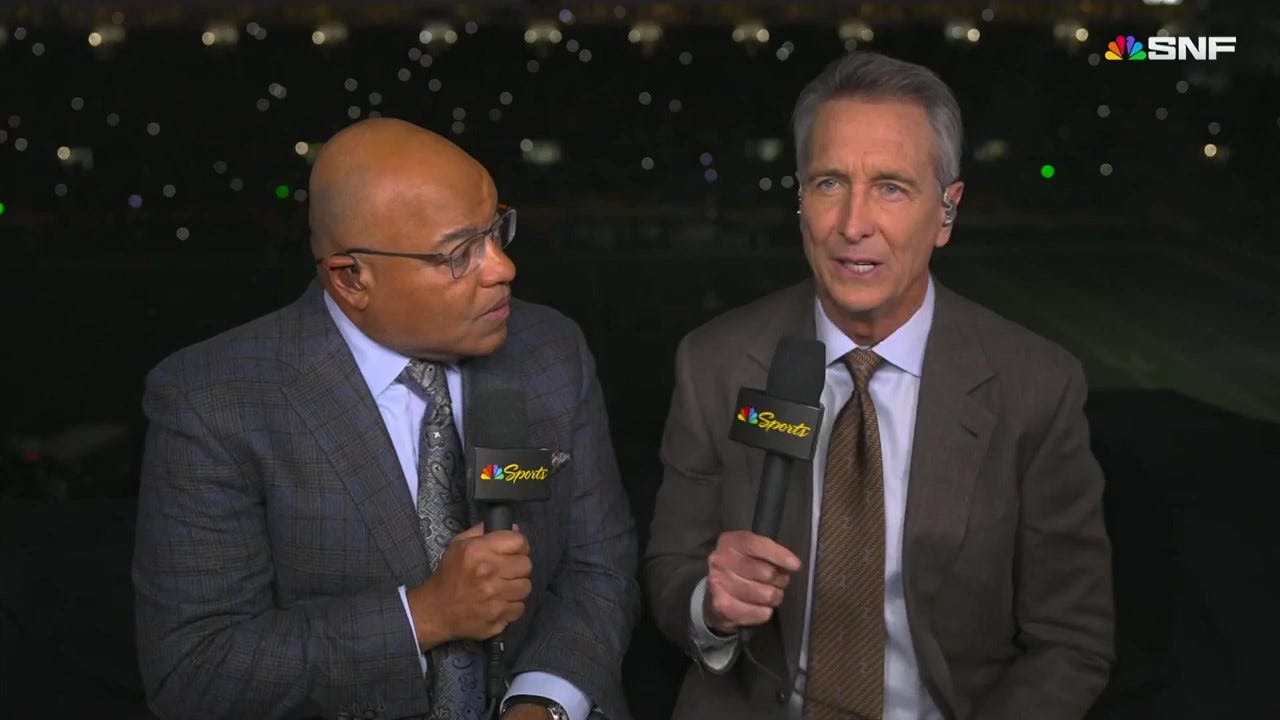Are sports fans being priced out of America’s games?
NFL and NBA seasons are now splintered across costly streaming platforms. Fans feel the pinch, but it’s unclear whether Congress sees it as a problem worth tackling.

The 2025 NFL season kicks off tonight in Philadelphia, where my Dallas Cowboys face the defending Super Bowl champion Philadelphia Eagles under the primetime lights at Lincoln Financial Field. But as the league returns, so does the scramble for fans at home to figure out how—and how much they’ll have to pay—to just watch their favorite teams.
The fan experience this fall has become more fragmented and more expensive than ever, with NFL and NBA games split across a dizzying lineup of services, including Amazon, Peacock, CBS/Paramount+, Netflix, ESPN’s new direct-to-consumer service, and Fox One, plus League Pass and Sunday Ticket for out-of-market games.
For households already strained by stubborn inflation and the costs of President Donald Trump’s trade wars, the prospect of juggling half a dozen subscriptions turns what was once a shared cultural ritual into a pocketbook burden and an access issue.
The question is whether Congress even sees this as a problem and if lawmakers believe Washington has a role in ensuring that national cultural events like Monday Night Football and Christmas Day basketball remain broadly affordable and accessible.
“Millions of Americans turn on Saturday and Sunday this fall to sports as an outlet. It’s something they can do with friends and family. It’s something that brings people together and convenes folks, that supports backyard barbecues and get-togethers,” House Democratic Caucus Chair Pete Aguilar (D-Calif.) told me this week. “And I do think that rising costs that people face are not exclusive to housing, healthcare, gas and groceries, but it includes lots of categories like entertainment, like going out to dinner with your family, like watching your local sports teams. And I think that's something that we have to be mindful of as well.”
Sen. Andy Kim (D-N.J.), who sadly is an Eagles fan but sits on the Senate Commerce Subcommittee on Telecommunications and Media that has jurisdiction over the issue, told me that it hits close to home as he and his wife recently unsubscribed from certain streaming services to stretch their household finances.
“It’s a lot,” he said. “First of all, it's just so complicated for people, and I just think that that’s getting really frustrating and annoying. So many people talk about their budget and they call it death by a thousand cuts. Yes, of course, housing is the deepest cut, health care is a cut, but then, just all this other stuff, your phone bill, your internet bill, and then this [or that] streaming service, and it’s just like, it's just really tough.”
For Rep. Jennifer McClellan (D-Va.), a member of the House Energy and Commerce Subcommittee on Communications and Technology, the squeeze goes beyond sports and has creeped into all forms of entertainment from movies to amusement parks.
“We need to understand how business models change to the point where the only way that they can survive is by pricing themselves out of the market for working people and working families,” she said. “Then we need to try to figure out if there is something we can do to change that dynamic.”
The current landscape is the result of deliberate corporate strategy. Disney has used ESPN’s new direct-to-consumer service to wall off much of its NFL and NBA inventory. Fox launched Fox One this fall with its own portfolio of NFL and college sports rights. Amazon secured Thursday Night Football as a streaming exclusive, while Netflix staked its claim with the NFL’s Christmas Day games. Each of these deals represents a business coup, but the cumulative effect is a marketplace intentionally fragmented to drive subscriptions. And it’s left fans with no single, affordable path to follow marquee events.
The current model marks a sharp break from past norms. For decades, broadcast rules and the Sports Broadcasting Act of 1961 ensured that the nation’s most significant games—from the Super Bowl to college football championships—were available on free, over-the-air networks. Cable consolidation in the 1980s and 1990s somewhat narrowed that access, but fans could still find the bulk of major contests within a handful of bundled channels. The streaming era has shattered that model by scattering rights across competing platforms and forcing fans to navigate a costly patchwork that reflects corporate priorities more than consumer convenience.
Sites like Streameast have filled the gap for fans who are unwilling or unable to pay for multiple subscription services to keep up with their teams for years. The illicit sports streaming hub in particular became the world’s largest, drawing more than 1.6 billion visits in the past year by offering unauthorized feeds of NFL, NBA, Champions League soccer, boxing pay-per-views and more.
This alternative came to an abrupt halt this week after an international sting operation dismantled the network, arrested alleged operators in Egypt and seized millions in assets. Industry leaders applauded the move while arguing that piracy sites like Streameast siphon money from sports at every level and expose fans to risks.
But the very popularity of Streameast is a reminder that it thrived in the first place because many fans see piracy less as theft than as the only affordable workaround as marquee games strew across platforms and monthly costs soar, and the powers that be contend with uncomfortable questions about whether the legal market is pushing viewers away.
Fans often turned to sports bars as an affordable alternative in better economic times to split the cost of expensive games across a crowd and enjoy the communal experience. But even that workaround may feel less viable this season as cover charges, rising drink and food prices and the simple expense of going out add up quickly. For some fans, what used to be a cheaper, social substitute for multiple streaming subscriptions is now just another luxury to cut back on, further underscoring how the rising price of sports access is colliding with a broader affordability crisis.
In theory, Congress could revisit the consumer protections that once guaranteed marquee games remained broadly accessible and modernize blackout rules for the streaming era. It could also scrutinize exclusive rights deals under antitrust law or direct the FCC and FTC to examine whether fans in rural areas, low-income households and older Americans are being priced out altogether.
Democrats are more likely to frame the issue around equity and affordability and tie it to the broader cost-of-living squeeze. At the same time, Republicans tend to argue that the free market and competition should shape how sports are distributed instead of new regulations, even if some in the party bristle at the growing influence of Big Tech in the space. These diverging politics and Congress’s packed legislative agenda leave little appetite for sweeping action. But it does create a narrow lane for bipartisan oversight hearings if only to signal that lawmakers are listening to fans’ frustrations.
The average House member is about 58 years old with a net worth just under half a million dollars, while the typical senator is closer to 64 and worth around $1.7 million. Those numbers reinforce Congress’s reputation as a body stocked with older, wealthier lawmakers who often seem far removed from the economic pressures most Americans face.
Yet alongside them, a newer generation of lawmakers who not only look more like their constituents but live with the same financial pressures is beginning to shift the picture.
“Just the other week, I tried to do some last-minute back-to-school shopping for the kids and it’s tough with all these costs that are coming. And when I’ve got a third-grader and a fifth-grader and I’m not only concerned about what’s coming in right now but trying to set aside a little something for the college fund whenever I can,” Kim told me. “And I’m also a part of the sandwich generation. I’ve got an aging father who has significant health issues right now and that’s been financially catastrophic for us. So, I try to talk publicly about this because I want people to know that there are people here in the Senate who understand some of these challenges we’re facing on this front.”
McClellan added that a government for the people must reflect the perspective of the people to effectively serve their interests.
“And if we are out of touch with what it’s like for our constituents of all walks of life and we’re not in touch with the struggles they have every day to pay for everything, then we can’t represent them and we can’t meet their needs.”
As for me, my only need is a Cowboys win tonight. But I digress.



